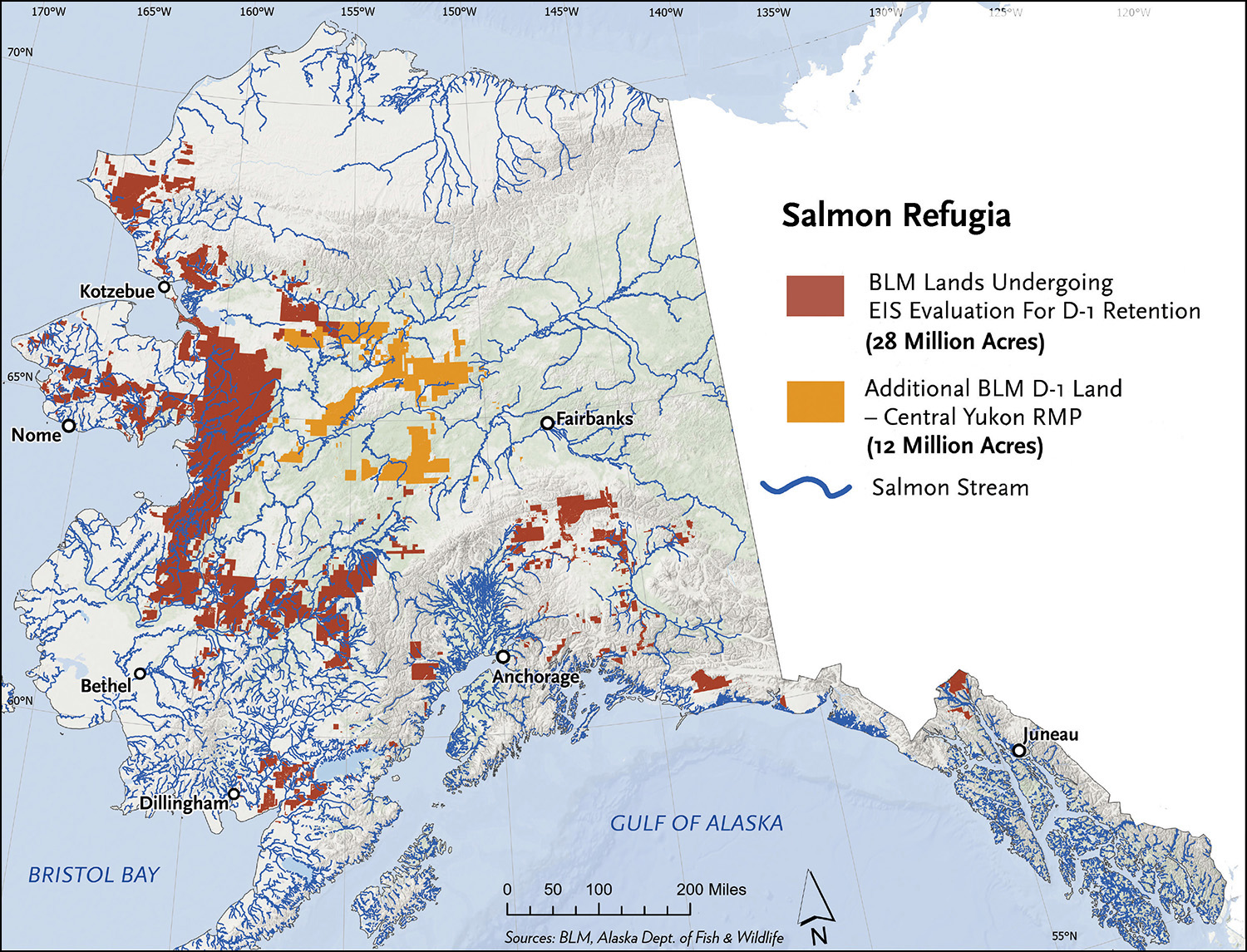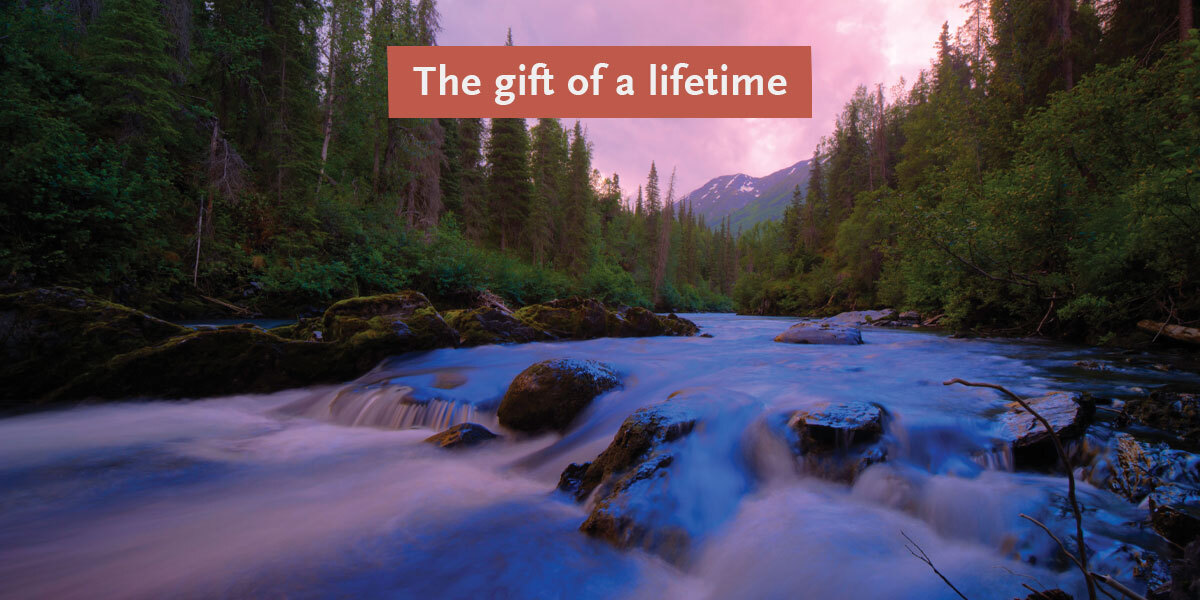The clock is ticking on a one-time chance to save 28 million acres of Alaska public land.
Campaign update: More than 140,000 Americans joined over half of Alaska Native Tribes, and hundreds of businesses in a groundswell of support for protections across 28 million acres of federal land in Alaska (see press release). Next, the Secretary of the Interior will review public comments, with a final decision expected in summer 2024.
In Alaska, everything is bigger. That’s true right now, of a rare chance to save some of America’s largest intact landscapes.
We have a small window of time to prevent 28 million acres of protected Alaska land (in total, an area larger than West Virginia) from being opened to extractive industrial development. These lands include Bristol Bay, where we spent decades working to stop Pebble Mine.
In the five maps below, we detail exactly why all 28 million public acres—not just Bristol Bay—are too precious to put at risk.
And the clock is ticking. We have until February 14 to tell the Bureau of Land Management to safeguard some of Alaska’s best salmon and trout rivers, along with the world’s best caribou habitat. We’ll never get this chance again. That’s because in Alaska, once land protections are lifted, they’re almost impossible to reinstate. Read on for what it means if we lose these lands forever.

28 Million Acres At Risk
In the last days of the Trump Administration, orders were issued to open tens of millions of acres of protected lands in Alaska to industrial development. These orders are still pending. In the crosshairs: 28 million acres of BLM lands spread across the state: some of the largest intact landscapes left on Earth. Through mid-February 2024, the Biden Administration’s BLM has opened a public comment period on whether to lift these protections. This is our moment to make sure these public lands stay in public hands.

A Threat to 100+ Alaska Native Communities
BLM-managed lands support important subsistence resources and serve as the breadbasket for thousands of Athabaskan, Aleut, Dena’ina, Inupiat, Yup’ik, and Tlingit peoples. More than 100 Alaska Native villages count on these lands for subsistence resources. And for Alaska Native communities living off the road system, more than 80 percent of food is sourced directly from surrounding lands and waters. In October, 78 Alaska Native Tribes wrote to urge Secretary of the Interior Deb Haaland to retain these protections.

A Threat to 5,000 Miles of Salmon Rivers—and Counting
Alaska’s BLM lands and its vast network of pristine rivers, lakes, and streams support five species of Pacific salmon. Salmon is an important subsistence resource for Alaska Natives and many other communities throughout Alaska. Even without a complete survey yet from the State of Alaska, we already know that at least 5,000 miles of salmon streams flow through the BLM lands under review.

A Threat to the Largest Caribou Herds on Earth
These BLM lands are home to three of North America’s largest caribou herds. The largest of these, the Western Arctic Caribou Herd, undertakes one of the longest terrestrial mammal migrations in the world. Communities rely on caribou migratory movements for subsistence harvest—a critical resource in northwest Alaska. But encroaching industrial development is already taking a toll on the Western Arctic Caribou Herd, which has shrunk by an estimated 23 percent in the last few years. We can’t risk losing these last unfragmented swaths of wildlife habitat.

A Threat to Your Public Lands
Alaska’s BLM lands represent some of the largest intact landscapes left in the United States. From Bristol Bay to the Yukon-Kuskokwim region, to new and emerging habitat, once glaciated, in East Alaska, these lands support outdoor recreation, hunting and fishing, and habitat connectivity across tens of millions of acres. Like giant puzzle pieces, these BLM lands adjoin the state’s other protected areas: critical parts of a whole and healthy Alaska.
Right now, we have a once-in-a-generation opportunity to safeguard Alaska’s BLM lands. In doing so, we can help secure a way of life for thousands of Alaska Natives, irreplaceable fish and wildlife habitat, and some of the largest intact landscapes left on Earth.




